The famous Via delle Orecchiette in Bari
That Italy LOVES pasta comes as no surprise. Italians dominate the ranking of the countries that consume the most pasta in the world annually with almost 23 kilos per person! Furthermore, they value their traditions very much and LOVE producing their own pasta. That’s why, today, I’m taking you to the famous Via delle Orecchiette in Bari, to discover some particularities of this very special place. Here at Your Travel to Italy with Ana Patricia you make the trip of your dreams!!! ALSO: see our “Accommodation in Italy – Tips for your holidays!”
Our Introduction
All Italian regions have specific types of pasta and, in Puglia, one of the most famous ones made by “mamma” and “nonna” is the “orecchiette”. Find everything about Bari here!
Tradition and culture turned into tourism
The famous Via delle Orecchiette in Bari is officially called Strada Arco Basso. It is characterized by a small tunnel that, when crossed, takes us to the oldest tradition of Bari Vecchia: the famous production of orecchiette pasta.
But what are orecchiettes?
It’s a pasta in the shape of a little ear. Orecchiette means “little ears” in Italian, but the name didn’t come from there, not exactly… do you know the reason for that name?
Well, there are numerous theories about the origins of this pasta: Some historians say that its birth took place in the Middle Ages, in Provence (France), where it was customary to prepare a durum wheat pasta in the shape of a disc dug in the center. This pasta would have arrived in Italy at the hands of the Angevins, who ruled Puglia and Basilicata in the year 200.
Another theory…
It says that, in reality, the origin of this pasta was at the hands of Sannicandro di Bari during the Norman-Swabian domination. It is said that, between the twelfth and thirteenth centuries, there was a fusion between the local cuisine and that of the Jewish community, and one of these typical dishes of the Jewish culinary tradition is the ears of Haman, which are presented in a concave and rounded shape, reminiscent, then, of the orecchiette.
How are they prepared?
The orecchiette on Via delle Orecchiette in Bari are prepared by housewives who live in that area of the city. They prepare the dough daily in front of passers-by and, therefore, have become a tourist attraction in the city, as seeing them working the dough is something, in fact, very interesting.
What are the ingredients?
With fresh ingredients, the base of the pasta is flour, eggs, and water, only. After the work of making the pasta, it is worked manually by the skilled hands of the ladies. With quick and precise gestures, it is not difficult for the ladies to stop to chat with their neighbors, with tourists, or with the curious on duty. And they are friendly! Pure craftsmanship!
Can I buy the pasta?
A huge YES for your question! It is an excellent souvenir idea, as they are dry and do not spoil easily. And, despite being dehydrated, you can see the immense difference – at the time of preparation – when tasting fresh pasta instead of industrialized pasta.
On sale there are simple pasta, pasta with sepia ink, without eggs… in short, there are options for all tastes – and budgets, since the prices are around 5 euros a package of pasta.
How about lunch on Via delle Orecchiette?
No, you did not read it wrong! You can taste the pasta right there! Some ladies who prepare the dough also offer lunch to tourists – prefer dinner? Your choice!
How about seeing how the pasta is made and then having a nice tasting? Like the idea? Then, CLICK HERE!
Attention, attention: controversy!
Did you know that Italians didn’t invent pasta? Yeah, well… it has a very suggestive history, legend says that the Chinese invented it, and brought to Europe by Marco Polo, in 1295, on his return from the empire of the Great Khan.
It is good to remember that Italy does not have a truly “authentic” cuisine. Italy offers us a fusion gastronomy, that is, they are legacies of different peoples that passed through there over the centuries, but the Italians, with mastery, elegance, and precision, gave their special touches to the dishes brought by foreigners to this land. so magical and, thus, Italian cuisine gained prominence all over the world and is one of the most famous and reproduced around the globe.
How many types of pasta are there in Italy?
About 300 types of pasta cataloged, not counting the pasta that come from family traditions. There are numerous types of pasta and they are made in different ways. Below is a summary (well summarized!) of the types of pasta:
Long pasta
The famous “pasta lung”. In addition, they can be categorized as:
- Thick pasta – like lasagna, reginette and pappardelle;
- Reduced thickness – like capellini, tagliolini and fettuccine;
- Rectangular – like trenette and linguine;
- Round pasta – spaghetti and vermicelli;
- Perforated – like bucatini.
There are also short pasta and, in this category, include:
- Small pasta – such as quadrucci, stelline, andditalini;
- Medium pasta – conchiglioni and orecchiette;
- Long pasta – like rigatoni and fusilli;
- And stuffed ones – like ravioli and agnolotti;
There are also “fantasy” pasta:
There are also “fantasy” pasta, with unusual shapes like Decorticato a Pietra, for example. The surfaces of the putties can also be different, and depending on the characteristics of the surface, they can be divided into three types:
- Mild – Which are very light;
- Rough and porous – which are the ones that best hold the sauce;
- Rigate – which also holds the sauce well, but are light like the smooth ones.
Did you know that there is a decree to determine the type of pasta in Italy?
So it is! Presidential Decree n. 187/01, says that “depending on the ingredients and the different analytical parameters, the masses are divided respectively into”:
Durum wheat semolina pasta: You should make this pasta with durum wheat semolina, water, and a higher amount of bran. Among the requirements, you must ensure that the final product’s maximum humidity equals 12.50%.
- Whole durum wheat semolina pasta: This pasta must contain whole durum wheat semolina and water, and it is characterized by a higher fiber content.
- Egg pasta: You must make the pasta with semolina, water, and eggs – ensuring no less than 4 whole chicken eggs per kilo of pasta. It is characterized by a higher nutritional protein content.
- Fresh pasta: You must prepare this with soft wheat flour. The final product should have variable humidity between 24-30% and must be stored at a temperature of up to +4 °C, with a tolerance of 2 °C.
- Stabilized pasta: Ensure that the final pasta does not have a humidity lower than 20%.
- Dietary pasta: Make this with a specific combination of ingredients, divided into gluten-free, protein-enriched, whole grain, and quick-cooking (with a higher amount of water).
- Special pasta: Pasta containing additional ingredients such as tomatoes, sepia ink, spinach, etc., named based on the basic ingredient used predominantly as semolina or whole durum wheat semolina.
Watch this video and learn: How to safe on food in Italy?
Subscribe to our channel and receive more video tips about Italy. Don’t forget to give this video a thumbs-up! 😉
TRAVEL TO ROME!
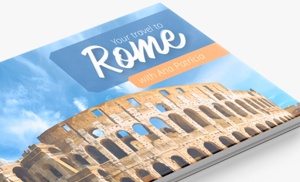
“Your Travel to Rome” is the quintessential e-book for your travel to one of the finest tourist destinations on the planet!
LEARN MORE
Conclusion
The famous Via delle Orecchiette in Bari. Bari is a splendid city and offers all the magic of fresh pasta made right before our eyes!
Do you feel unsafe traveling?
If you need help organizing your trip, do not hesitate to contact me! I would love to help you make your dream trip to Italy.
Still in doubt? Be sure to post your questions below, or just send me a message and I will answer you as soon as possible!
An Extra Help for your Trip
The best content from Your Travel to Italy!
Learn more about our tours in Italy right now!
- What to visit in Italy in 10 days?
- The ten must-see places in Tuscany?
- The best tips to save on your trip to Italy?
- What are the 10 most visited cities in southern Italy?
- Airports in Italy? How to get to your hotel? (Venice, Milan, Rome, Florence)
- What to do in 1/2/3/4 days in the main Italian cities?
- The best tips on food in Italy (wines, typical food, enogastronomy tours)
- How to get from Fiumicino Airport to Rome downtown?
- Your Travel to Italy: 10 tips for traveling through Italy!
Best regards from Italy

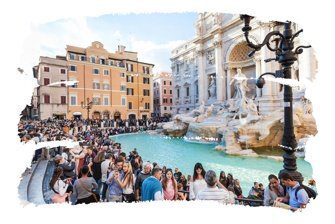
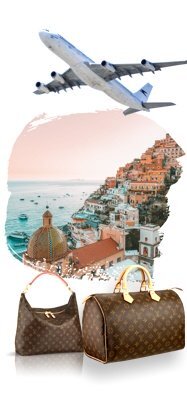
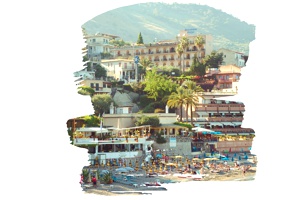 PLACES TO STAY IN ITALY
PLACES TO STAY IN ITALY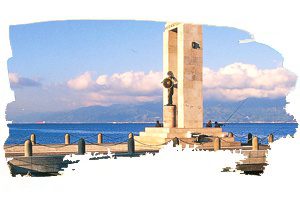

 Save money!
Save money!